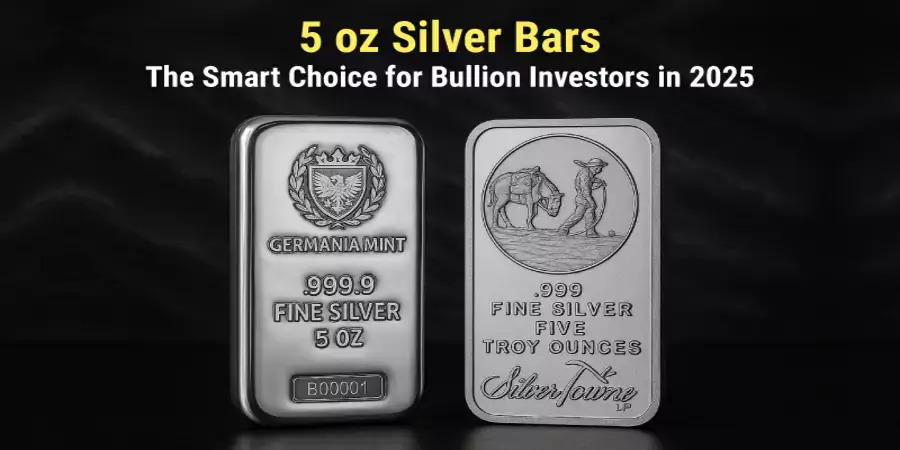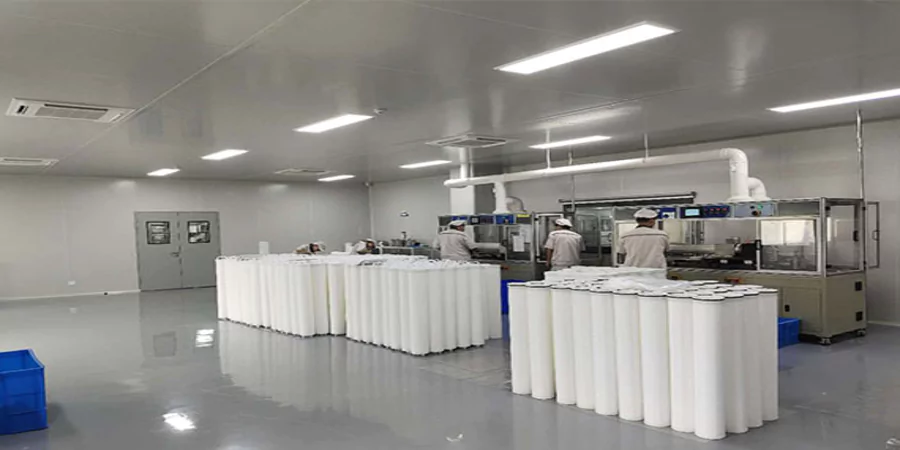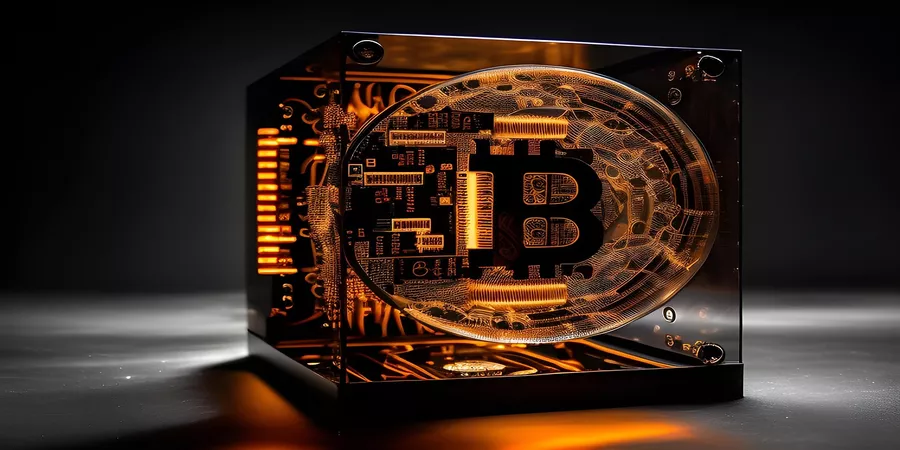The 5 oz silver bar occupies a distinctive niche in precious metals investing substantial enough to reduce per-ounce premiums compared to smaller denominations, yet divisible enough to provide liquidity advantages over larger formats like 100 oz bars. However, determining whether this mid-weight format aligns with specific investment objectives requires understanding considerably more than marketing materials typically reveal. According to the Silver Institute’s 2024 World Silver Survey, physical silver investment (bars and coins) represented 20% of total silver demand at 243.5 million ounces yet the premium structures, liquidity characteristics, storage considerations, tax implications, and opportunity costs vary dramatically across different bar sizes and investment vehicles. For investors evaluating whether 5 oz silver bars deserve allocation within precious metals portfolios, this analysis examines the economic fundamentals, practical considerations, comparative advantages, inherent limitations, and risk factors that separate informed investment decisions from reactive purchases driven by fear or speculation. Understanding these factors proves essential for determining whether 5 oz silver bars represent appropriate investment vehicles for your specific financial situation, risk tolerance, and portfolio objectives.
CRITICAL DISCLAIMER: This article provides educational information about silver investment considerations and should not be construed as financial advice. Precious metals investing carries substantial risk including loss of principal. Past performance does not guarantee future results. Silver prices are highly volatile and can decline significantly. Investors should conduct thorough due diligence and consult qualified financial advisors before making investment decisions. The author and publisher assume no liability for financial decisions made based on this information.
Understanding Silver as an Investment Asset Class
Silver’s Dual Nature: Industrial and Monetary Metal
Before examining specific bar sizes, investors must understand silver’s unique position among commodities and precious metals:
Industrial Demand (Primary Driver): According to the Silver Institute, industrial applications consumed approximately 48% of silver supply in 2024, including:
- Electronics: Conductive properties make silver essential for switches, contacts, and circuit boards
- Solar photovoltaics: Each solar panel contains 15-20 grams of silver; renewable energy expansion drives demand
- Medical applications: Antimicrobial properties utilized in wound dressings, medical devices
- Automotive: Electric vehicle production requires 25-50 grams per vehicle (vs. 15-28g for conventional vehicles)
Investment Demand: Physical investment (bars, coins) plus financial instruments (ETFs, futures) represented approximately 32% of demand in 2024.
Monetary History: Silver served as currency for millennia, creating psychological association with store-of-value despite industrial commodity characteristics dominating modern markets.
This dual nature creates complex price dynamics. Unlike purely monetary gold (minimal industrial use), silver prices reflect both investment sentiment AND industrial production cycles. Economic expansions increase industrial demand while potentially reducing safe-haven investment demand creating cross-currents absent in pure monetary metals.
Historical Silver Price Performance and Volatility
Realistic investment expectations require understanding historical performance:
Long-Term Price History:
- 1980 peak: $48.70/oz (inflation-adjusted: ~$180/oz in 2025 dollars) driven by Hunt brothers’ attempted corner
- 1990-2000s: $4-$7/oz range during multi-decade bear market
- 2011 peak: $48.44/oz during post-financial-crisis precious metals rally
- 2015-2019: $14-$17/oz range following peak decline
- 2020-2021: $17-$28/oz COVID-era volatility
- 2022-2024: $18-$26/oz range
- Early 2025: ~$28-$32/oz (fluctuating)
Volatility Characteristics: Silver demonstrates significantly higher volatility than gold. Standard deviation of annual returns approximately 30-35% for silver vs. 15-20% for gold according to World Gold Council analysis. This volatility creates both opportunity and risk larger potential gains during bull markets, steeper losses during corrections.
Gold-Silver Ratio: Historically averaged 60:1 (60 ounces of silver equal 1 ounce of gold). When ratio exceeds 80:1, some analysts consider silver “undervalued” relative to gold. When below 50:1, potentially “overvalued.” However, this ratio provides general context, not trading signals it’s remained elevated (70-90:1) for extended periods during the 2010s-2020s.
Real Returns: Inflation-adjusted analysis shows silver provided negative real returns over many multi-decade periods. Investors who purchased at 1980 peak waited until 2011 for breakeven in nominal terms representing substantial real loss after inflation.
According to research from Campbell Harvey at Duke University, silver returned approximately 6.8% annualized from 1975-2024, underperforming diversified stock portfolios (S&P 500: ~10% annualized) while exhibiting much higher volatility.
Factors Driving Silver Prices in 2025
Understanding current market dynamics:
Supply Factors:
- Mine production: ~830 million ounces annually, with Mexico, Peru, China leading producers
- Recycling: ~180 million ounces from industrial scrap and old jewelry
- Government sales: Minimal compared to historical strategic stockpile liquidations
Demand Factors:
- Solar energy expansion: International Energy Agency projects solar capacity doubling 2024-2030, increasing silver demand
- 5G infrastructure: Telecommunications buildout consuming additional silver
- Electric vehicle adoption: Gradual transition increasing per-vehicle silver content
- Investment demand: Varies with economic uncertainty, inflation expectations, currency concerns
Macroeconomic Influences:
- US dollar strength: Silver priced in dollars; stronger dollar generally pressures prices downward
- Real interest rates: Rising real yields make non-yielding assets like silver less attractive
- Inflation expectations: Higher inflation increases precious metals appeal as hedges
- Geopolitical uncertainty: Crises typically boost safe-haven demand
Technical Market Factors:
- ETF flows: Large ETF purchases/redemptions move markets
- Futures market positioning: Speculative long/short positions influence short-term prices
- Central bank policies: Monetary stimulus generally supportive of precious metals
Credible 2025 silver price forecasts range widely from bearish projections of $20-24/oz if economic growth moderates and real rates rise, to bullish scenarios of $35-45/oz if inflation proves persistent and industrial demand accelerates. This forecast dispersion underscores inherent uncertainty in commodity price prediction.
The Economic Case for 5 oz Silver Bars
Premium Structure Analysis
Understanding dealer premiums separates informed from naive precious metals investors:
Premium Components: Premiums above spot price reflect:
- Fabrication costs: Refining, casting, stamping, quality control
- Dealer margins: Wholesale acquisition, retail markup, overhead
- Market dynamics: Supply/demand for specific products, liquidity
- Brand value: PAMP Suisse, Perth Mint command premiums over generic bars
Size-Based Premium Trends:
Based on 2024-2025 average dealer pricing (spot silver $28/oz):
| Product | Total Cost | Premium per oz | Premium % |
|---|---|---|---|
| 1 oz bar | $33-34 | $5-6 | 18-21% |
| 5 oz bar | $155-165 | $3.00-5.00 | 11-18% |
| 10 oz bar | $305-320 | $2.50-4.00 | 9-14% |
| 100 oz bar | $2,900-2,980 | $1.00-2.00 | 4-7% |
| 1000 oz bar (institutional) | $28,500-28,700 | $0.50-0.70 | 2-3% |
5 oz Bar Sweet Spot Thesis: Proponents argue 5 oz bars offer optimal premium efficiency for retail investors:
- Substantially lower per-ounce premium than 1 oz products (saving 7-10% per ounce)
- Minimal premium disadvantage vs. 10 oz bars (typically 1-3% difference)
- Better divisibility than 100 oz bars for partial liquidation
- Total cost ($155-165) remains accessible for budget-conscious stackers
Critical Analysis: While premium advantages are real, consider:
- Buy-sell spread: Dealers typically buy back at 2-5% below spot, partially negating premium savings
- Holding period: Premium becomes less significant over long holding periods as appreciation/depreciation dominates
- Opportunity cost: Premium saved on larger bars could be invested elsewhere generating returns
Liquidity Considerations
Liquidity ability to quickly convert to cash at fair prices varies by bar size:
5 oz Bar Liquidity Profile:
Advantages:
- Easier to sell partial holdings (liquidate $160 instead of entire $3,000 position)
- Broader dealer acceptance (most bullion dealers buy 5 oz bars)
- Shipping practicality (lower value reduces insurance costs, theft risk)
- Private party sales viable (more buyers afford $160 than $3,000 purchase)
Limitations:
- Still less liquid than government-minted coins (American Silver Eagles, Canadian Maples command recognition premium)
- Generic 5 oz bars may receive lower buyback offers than branded products
- Dealer buyback spreads (2-5% below spot) create immediate loss on purchase
- Local market depth varies (urban areas with multiple dealers offer better liquidity than rural locations)
Comparative Liquidity Analysis:
- Most liquid: Government silver coins (Eagles, Maples, Philharmonics) universally recognized, easily authenticated, robust secondary market
- High liquidity: 1 oz and 10 oz bars from major mints, 100 oz bars for larger transactions
- Moderate liquidity: 5 oz bars, less common sizes (2 oz, 50 oz)
- Lower liquidity: Odd weights, obscure mints, vintage bars requiring authentication
According to APMEX (major online bullion dealer) data, bid-ask spreads average:
- Silver Eagles: 6-8% (dealers buy at ~$3-4 below retail)
- Major mint 1 oz bars: 8-10%
- Generic 5 oz bars: 10-12%
- 100 oz bars: 4-6% (tighter spread in dollar terms but requires larger capital)
Storage and Security Practicalities
Physical precious metals require secure storage often underestimated cost by new investors:
Home Storage:
- Safe deposit box: $50-$300 annually depending on size and location; provides bank vault security but limits access (business hours only, disaster scenarios)
- Home safe: $500-$3,000 one-time cost for quality fire-rated, burglar-resistant safe; requires homeowner’s insurance rider for bullion coverage (typically 1-2% of value annually)
- Hidden storage: No direct cost but security risks; homeowner’s insurance typically excludes or severely limits precious metals coverage without explicit rider
Professional Storage:
- Allocated storage: Private vault companies (Brinks, Loomis) charge 0.5-1.5% annually; provides insurance, security, but adds ongoing cost
- Pool allocated/unallocated: Slightly lower fees but introduces counterparty risk (you own share of vault inventory, not specific bars)
5 oz Bar Storage Considerations:
- 100 oz of silver (20× 5 oz bars) occupies ~200 cubic inches, fits standard home safe
- Weight manageable (5 oz = 155 grams = 0.34 pounds) for transport or reorganization
- Multiple bars allow geographic diversification (portion in safe deposit box, portion in home safe)
Total Cost of Ownership: For $10,000 silver investment:
- Home safe ($1,500 one-time) + insurance rider (1.5% annually = $150/year) = $1,500 + $1,500 over 10 years = $3,000 total
- Professional storage (1% annually) = $1,000 over 10 years
- Safe deposit box ($150 annually) = $1,500 over 10 years
These costs reduce effective returns. A 5% annual silver appreciation becomes 3.5-4% after storage costs materially impacting investment thesis.
Evaluating Reputable 5 oz Silver Bar Producers
Major Mint Comparison
Quality, reputation, and secondary market recognition vary among producers:
PAMP Suisse (Switzerland):
- Reputation: Preeminent global refiner, established 1977
- Purity: .9999 fine (99.99% silver)
- Design: Lady Fortuna series most recognized; includes certificate of authenticity
- Premium: Higher than generic (adds ~$5-10 per bar)
- Secondary market: Strongest recognition, easiest resale
- Considerations: Premium may not be recovered on resale unless collector demand persists
Perth Mint (Australia):
- Reputation: Government-backed (Western Australian government guarantee)
- Purity: .999 or .9999 depending on product line
- Design: Various including lunar series, native animals
- Premium: Moderate to high
- Secondary market: Excellent recognition, particularly in Asia-Pacific markets
Sunshine Minting (USA):
- Reputation: Major US private mint, supplies blanks to US Mint
- Purity: .999 fine
- Technology: MintMark SI® anti-counterfeiting feature (decoder lens reveals hidden image)
- Premium: Moderate, competitive with generic bars
- IRA eligibility: Meets IRS fineness requirements for precious metals IRAs
- Secondary market: Strong domestic recognition
Royal Canadian Mint:
- Reputation: Government mint, world-class security features
- Purity: .9999 fine
- Design: Maple leaf iconic; periodic special releases
- Premium: Moderate to high
- Bullion DNA: Some products include digital registry for authentication
- Secondary market: Excellent global recognition
Generic/Secondary Mints: Numerous smaller refiners produce .999 fine silver bars (SilverTowne, Scottsdale Mint, Asahi, Geiger, Germania):
- Advantages: Lower premiums, wider selection
- Disadvantages: Variable secondary market recognition, potential authentication challenges, less brand prestige
Purity Standards and Certification
Fineness Terminology:
- .999 fine: 99.9% silver, 0.1% other metals (most common for investment bars)
- .9999 fine: 99.99% silver (higher purity, typical for premium mints)
- Sterling silver (.925): 92.5% silver (jewelry standard, NOT investment grade)
IRS Requirements for Precious Metals IRAs: US tax code requires .999 minimum fineness for silver held in self-directed IRAs. Lower purity disqualifies product from tax-advantaged accounts.
Certification and Assay:
- Serial numbers: Most investment-grade bars include unique serial numbers enabling verification
- Assay certificates: Some premium products include certificates from independent assay companies
- Tamper-evident packaging: Many bars ship in sealed plastic with identifying information
- Mint marks and weight stamps: Essential authentication features
Counterfeit Risk: Chinese counterfeiters produce sophisticated fakes including:
- Tungsten cores (similar density to silver) with silver plating
- Accurate weight and dimensions
- Forged mint marks and serial numbers
Mitigation strategies:
- Purchase from reputable dealers (APMEX, JM Bullion, SD Bullion, local established dealers)
- Verify with precious metals testing (specific gravity, ultrasonic, XRF analysis)
- Stick with recognized mints featuring anti-counterfeiting technology
- Avoid “too good to be true” prices on secondary markets
Tax Implications and Regulatory Considerations
US Federal Tax Treatment
Precious metals face specific tax rules often surprising to new investors:
Capital Gains Classification: IRS classifies physical silver as “collectible” under IRC Section 408(m), subject to:
- Maximum long-term capital gains rate: 28% (vs. 0-20% for stocks/bonds)
- Short-term capital gains: Ordinary income rates (10-37% depending on bracket)
- Holding period: Must hold >1 year for long-term treatment
This unfavorable tax treatment significantly impacts after-tax returns. A 20% gain becomes 14.4% after-tax at maximum collectibles rate, vs. 16% after-tax at 20% long-term capital gains rate for stocks.
Form 1099-B Reporting: Dealers must file 1099-B with IRS for sales of:
- Silver bars: 1,000 troy ounces or more
- Silver coins (except US-minted): Quantities depend on type
Smaller transactions aren’t automatically reported, but sellers remain legally obligated to report capital gains/losses on Schedule D regardless of 1099-B issuance.
State Sales Tax: Varies dramatically by jurisdiction:
- No sales tax on bullion: Most states exempt investment-grade precious metals
- Partial exemptions: Some states exempt purchases exceeding thresholds ($1,000-$1,500 typical)
- Full sales tax: Several states tax precious metals purchases at standard rates (7-10%)
Always verify local tax treatment before purchase sales tax immediately creates loss requiring price appreciation for breakeven.
Precious Metals IRAs
Self-directed IRAs allow physical precious metals holdings:
Requirements:
- IRS-approved custodian must hold metals (cannot store in home safe)
- Minimum .999 fineness for silver
- Must use approved depository (Delaware Depository, Brinks, etc.)
- All purchases, storage, and sales go through custodian
Costs:
- Account setup: $50-$300
- Annual administrative fees: $75-$300
- Storage fees: $100-$300 annually or percentage-based
- Transaction fees: $40-$95 per trade
Advantages:
- Tax-deferred growth (traditional IRA) or tax-free growth (Roth IRA)
- No capital gains tax on transactions within IRA
- Estate planning benefits
Disadvantages:
- Substantial fees erode returns
- Prohibited transaction rules strict (can’t personally take possession)
- Required minimum distributions (RMDs) at age 73 may force sales at inopportune times
- No physical possession defeats some investors’ rationale for physical metals
Reporting and Documentation
Record-Keeping Requirements: Maintain documentation for all precious metals transactions:
- Purchase receipts (date, amount paid, dealer information)
- Assay certificates and authenticity documentation
- Sale receipts (date, amount received, buyer information)
- Storage and insurance costs (may be deductible as investment expenses in limited circumstances)
Capital Loss Limitations:
- Capital losses offset capital gains plus $3,000 ordinary income annually
- Excess losses carried forward to future years
- Proper documentation essential for claiming losses
Comparing Silver Investment Vehicles
Physical Bars vs. Silver ETFs
Exchange-traded funds offer alternative silver exposure:
Silver ETFs (iShares Silver Trust – SLV, Aberdeen Physical Silver – SIVR):
Advantages:
- Liquidity: Buy/sell instantly during market hours at transparent prices
- No storage hassles: Fund handles vault storage
- Lower transaction costs: Brokerage commissions ($0 many brokers) vs. bullion dealer spreads (8-15%)
- Fractional shares: Invest any dollar amount
- Tax efficiency: Long-term capital gains at preferential 0-20% rates (not 28% collectibles rate)
- IRA compatible: Hold in standard brokerage IRAs without special custodian
Disadvantages:
- Expense ratios: 0.50% annually (SLV), 0.30% (SIVR) erodes returns over time
- No physical possession: Defeat’s “collapse insurance” rationale for some investors
- Counterparty risk: Trust structure, though minimal risk given physical silver backing
- Tracking error: Slight discrepancies between NAV and spot price
Cost Comparison Example (10-Year Holding):
- Physical 5 oz bars: 12% purchase premium + 1% annual storage = 22% total costs
- Silver ETF: 0.50% annual expense ratio = 5% total costs
ETFs offer dramatic cost advantages for investors prioritizing returns over physical possession.
Silver Mining Stocks
Equity exposure to silver via mining companies:
Major Silver Producers (Pan American Silver, Hecla Mining, MAG Silver, Wheaton Precious Metals):
Advantages:
- Leverage: Share prices typically move 2-3x silver price changes (amplified gains in bull markets)
- Dividends: Some miners pay dividends (passive income silver bars can’t provide)
- Growth potential: Successful exploration/development creates value beyond metal prices
- Lower transaction costs: Standard stock brokerage fees
- Tax treatment: Standard capital gains rates (0-20% long-term)
Disadvantages:
- Company-specific risks: Management quality, operational issues, accidents, labor disputes, political risk
- No physical metal ownership: Shares represent company ownership, not silver claims
- Correlation imperfect: Mining stocks influenced by equity markets, not purely silver prices
- Higher volatility: Combining silver volatility with equity market volatility
- Potential dilution: Companies may issue shares, diluting existing holders
Performance Comparison: Historical data shows mixed results. During strong silver rallies (2009-2011, 2020), quality miners outperformed physical silver substantially (200-500% gains vs. 100-150% for metal). However, during bear markets (2011-2015), many miners declined 60-80% while silver declined 50-60% leverage cuts both ways.
Silver Futures and Options
Sophisticated instruments for experienced investors:
COMEX Silver Futures:
- Contract size: 5,000 troy ounces
- Margin requirements: ~10-15% of contract value
- Extreme leverage and risk
- Requires active management and trading expertise
- Contango/backwardation affects roll costs
Not appropriate for buy-and-hold investors or those seeking long-term silver exposure. Futures serve hedging and speculation purposes, not physical asset acquisition.
Comparative Analysis Summary
| Factor | Physical Bars | Silver ETFs | Mining Stocks |
|---|---|---|---|
| Liquidity | Moderate | Excellent | Excellent |
| Transaction Costs | High (8-15%) | Low (0%) | Low (0-$5) |
| Ongoing Costs | Storage (1%+) | Expense ratio (0.3-0.5%) | None |
| Tax Treatment | 28% collectibles rate | 0-20% LTCG | 0-20% LTCG |
| Physical Possession | Yes | No | No |
| Leverage | 1:1 | 1:1 | 2-3:1 |
| Counterparty Risk | Minimal | Low | Moderate |
| Complexity | Low | Low | Moderate |
| Best For | Physical possession priority, collapse hedging | Cost-efficient exposure, IRA holdings | Growth potential, risk tolerance |
When 5 oz Silver Bars Make Sense (And When They Don’t)
Investor Profiles Suited for 5 oz Bars
Profile 1: Budget-Conscious Stackers
- Regular small purchases ($150-300 monthly)
- Dollar-cost averaging strategy
- Building position over time
- Why 5 oz works: Accessible price point, premium efficiency over 1 oz
Profile 2: Partial Portfolio Precious Metals Allocation
- Traditional investment portfolio (stocks, bonds, real estate)
- 5-10% precious metals allocation for diversification
- Modest total silver position ($5,000-$20,000)
- Why 5 oz works: Right-sized for fractional liquidation, manageable storage
Profile 3: Gift and Legacy Planning
- Tangible wealth transfer to children/grandchildren
- Milestone gifts (graduations, weddings, births)
- Estate planning with physical assets
- Why 5 oz works: Meaningful value, collectible appeal, easily dividable among heirs
Profile 4: Barter/Emergency Preparedness
- Concerned about currency crisis or economic collapse scenarios
- Want tradeable units for potential barter
- Physical possession essential to thesis
- Why 5 oz works: More practical barter denominations than 100 oz bars
When Alternative Silver Investments Make More Sense
Scenario 1: Primary Investment Goal is Returns If maximizing investment returns is the primary objective:
- Better option: Silver ETFs (lower costs, better tax treatment)
- Or: Quality silver mining stocks (leverage, dividends, growth potential)
- Why: Physical silver’s high transaction costs and unfavorable tax treatment handicap returns
Scenario 2: Large Capital Allocation ($50,000+) For substantial silver positions:
- Better option: 100 oz or 1000 oz bars (dramatically lower premiums 4-7% vs. 11-18%)
- Or: Combination of 100 oz bars (core holdings) + smaller bars/coins (liquidity)
- Why: Premium savings compound significantly on large amounts
Scenario 3: IRA/Tax-Advantaged Account For retirement accounts:
- Better option: Silver ETFs in standard IRA (no custodian fees, instant liquidity)
- Why: Precious metals IRA fees (setup, annual, storage) erode returns; ETFs provide exposure without complications
Scenario 4: Active Trading or Market Timing For investors seeking to trade silver price movements:
- Better option: Silver ETFs or mining stocks (instant liquidity, low transaction costs)
- Why: Physical bullion dealer spreads (8-15%) require ~10-15% price appreciation just to break even on round-trip transaction
Scenario 5: Limited Storage Capability For investors lacking secure storage:
- Better option: Silver ETFs or allocated professional storage programs
- Why: Home storage without quality safe creates theft risk; safe deposit boxes limit access
Honest Assessment of Silver Investment Risks
Price Volatility: Silver can decline 30-50% during bear markets. Investors unwilling to tolerate this volatility should avoid precious metals or limit allocation severely.
Opportunity Cost: From 2011-2020, silver essentially traded sideways while S&P 500 tripled. Physical silver in safe generates no dividends, interest, or earnings growth only price appreciation potential.
Liquidity Risk: Despite being “liquid” asset class, selling physical silver requires:
- Finding buyer willing to pay fair price
- Authentication process (reputable dealers test bars)
- Physical delivery or shipping
- 2-5% below spot price typical dealer buyback
During crises when investors might need liquidity most, dealer premiums often widen and buyback spreads increase.
Storage and Insurance Costs: Ongoing costs of 0.5-2% annually compound over time, substantially reducing net returns. A 50% silver price gain over 10 years becomes 30-40% net return after costs.
Regulatory Risk: Government confiscation (as occurred with gold in 1933) remains remote possibility. More realistically, capital gains tax rates could increase, reporting requirements could tighten, or sales taxes could be imposed.
Inflation Hedge Limitations: Despite marketing claims, silver’s inflation-hedging track record is inconsistent. During high inflation periods (1970s), silver performed well. During moderate inflation (2010s), silver underperformed. It’s not reliable short-term inflation hedge, though may provide long-term purchasing power protection.
Practical Purchase and Storage Strategies
Dealer Selection Criteria
Reputable National Dealers:
- APMEX (American Precious Metals Exchange)
- JM Bullion
- SD Bullion
- Provident Metals
- Money Metals Exchange
Evaluation Factors:
- Better Business Bureau rating (A+ preferred)
- Years in business (10+ years established track record)
- Pricing transparency (clearly displayed buy/sell spreads)
- Secure payment options (avoid dealers demanding unconventional payment methods)
- Clear return/cancellation policies
- Responsive customer service
Local Coin Shops (LCS):Advantages:
- No shipping delays or costs
- Personal relationships and negotiation
- Immediate possession
- May offer better prices on certain products
Disadvantages:
- Limited selection compared to major online dealers
- Potentially higher premiums
- Operating hours constraints
- Variable expertise and reputation
Red Flags:
- Pressure sales tactics
- Guaranteed investment returns promises
- Collectible coins pushed aggressively (“rare” coins with extreme markups)
- Requests for Western Union, cash-only, or cryptocurrency payments to “avoid taxes”
Authentication and Testing
Visual Inspection:
- Weight matches specifications (5 troy oz = 155.52 grams = 5.44 regular oz)
- Dimensions match published specifications
- Sharp, clear mint marks and stampings (blurry features suggest casting issues)
- Even coloration (silver oxidizes uniformly; irregular tarnish patterns suspicious)
Sound Test: Silver produces distinctive high-pitched “ring” when struck. Counterfeit tungsten-core fakes produce dull sound. Not definitive but useful preliminary test.
Magnet Test: Silver is non-magnetic. Strong attraction to magnets confirms fake. However, silver is slightly diamagnetic (weakly repelled), so absence of magnetic attraction alone doesn’t confirm authenticity.
Specific Gravity Test: Silver density: 10.49 g/cm³. Precise water displacement measurement reveals density. Requires accurate scale (0.01g precision) and careful methodology.
Professional Testing:
- XRF (X-Ray Fluorescence) Analysis: Non-destructive electronic testing measuring elemental composition. Most reliable method available at coin shops and dealers (~$20-50 per test or free with purchase from reputable dealers).
- Ultrasonic Testing: Sound wave propagation reveals internal composition, detecting tungsten cores. Available at some dealers and testing services.
- Acid Testing: Destructive test using nitric acid on inconspicuous area. Rarely necessary for modern investment-grade bars.
When to Test:
- Always test purchases from unfamiliar dealers, private parties, or secondary markets
- Periodically verify holdings, especially before large sales
- Any bars with suspicious features (weight discrepancies, poor striking quality, unusual tarnishing)
Dollar-Cost Averaging Strategy
Rather than timing market entries, systematic purchasing reduces timing risk:
Monthly Investment Plan Example:
- Budget: $300/month for silver
- Purchase: 1-2 bars of 5 oz each month (depending on current prices)
- Duration: 12-60 months to build $3,600-$18,000 position
Advantages:
- Reduces impact of buying at market peaks
- Enforces discipline (removes emotional decision-making)
- Manageable cash flow impact
- Builds position through market cycles
Disadvantages:
- Transaction costs on each purchase (mitigated by dealers offering free shipping over thresholds batch purchases quarterly)
- May miss opportunity to buy dips with larger lump sums
- Requires sustained discipline
Optimization:
- Batch purchases quarterly to reduce transaction frequency (buy 6-8 bars every 3 months vs. 2 bars monthly)
- Increase purchases during price corrections (opportunistic averaging)
- Suspend purchases during extreme rallies, resuming after corrections
Secure Storage Best Practices
Home Storage Security Layers:
Physical Security:
- Quality safe: Minimum 1-2 hour fire rating, burglary-resistant construction ($800-$3,000)
- Installation: Bolt to concrete floor/wall studs (prevents removal)
- Location: Inconspicuous placement away from obvious master bedroom location
- Decoy safe: Small cheap safe in obvious location with minimal valuables
Operational Security:
- Limit knowledge (fewer people know, lower risk)
- Avoid social media posts about precious metals holdings
- Vary dealer relationships (don’t establish patterns)
- Diversify storage locations (home safe, safe deposit box, trusted location)
Insurance:
- Standard homeowners policies typically limit precious metals coverage ($1,000-$2,500)
- Scheduled personal property endorsement (floater) covers specific valuable items with appraisal
- Specialty precious metals insurance (Hugh Wood, Jewelers Mutual)
- Annual premium: 1-2% of insured value
Geographic Diversification: For holdings exceeding $25,000:
- 50-60% in primary home safe
- 20-30% in safe deposit box
- 10-20% in secondary location (vacation property, trusted relative, professional vault)
Documentation:
- Photograph all bars (serial numbers visible)
- Maintain purchase receipts separately from physical metals
- Encrypted digital backup of documentation
- Physical copies in separate secure location
This multi-layered approach protects against theft, fire, natural disasters, and personal incapacitation scenarios.
Market Timing Considerations and Contrarian Thinking
Identifying Favorable Purchase Conditions
While timing markets perfectly is impossible, certain conditions suggest better entry points:
Technical Indicators:
- Gold-Silver Ratio: When ratio exceeds 80:1, silver historically undervalued relative to gold (though can remain elevated for years)
- Relative Strength Index (RSI): Below 30 suggests oversold conditions (potential buying opportunity)
- Moving averages: Price trading below 200-day moving average often precedes mean reversion rallies
Sentiment Indicators:
- COT Reports: Commodity Futures Trading Commission reports show commercial vs. speculative positioning. Extreme speculative short positions often precede rallies.
- Media coverage: Minimal precious metals coverage suggests low investor interest (contrarian buying opportunity)
- Dealer premiums: Compressed premiums indicate weak demand (favorable buying conditions)
Macroeconomic Context:
- Rising real interest rates (nominal rates – inflation) pressure precious metals
- Dollar strength (DXY above 100) creates headwinds
- Economic expansion with low inflation reduces safe-haven demand
Historical Buying Opportunities:
- March 2020 COVID crash: Silver touched $12/oz before rallying to $28/oz (133% gain within 5 months)
- 2015-2016 bottom: ~$14/oz before 2019-2020 rally
- Post-2011 peak decline: Created multi-year accumulation opportunity
Avoiding Common Behavioral Traps
Fear-Driven Buying: Precious metals advertising intensifies during crises, preying on fear:
- Economic collapse scenarios
- Currency collapse narratives
- “Buy before it’s too late” urgency
Reality check: Consistent dollar-cost averaging during calm periods typically yields better results than panic buying at inflated premiums during crises when demand surges.
Recency Bias: Investors extrapolate recent performance indefinitely:
- Silver rallies from $18 to $28: “It’s going to $50!”
- Silver declines from $28 to $20: “It’s going to $10!”
Reality check: Mean reversion is powerful force. Extreme optimism/pessimism mark turning points more often than trend continuations.
Anchoring to Historical Peaks: Investors who remember 2011’s $48/oz peak often fixate on that price:
- “Silver should be at $50+ by now”
- “I’ll buy when it drops to $15”
Reality check: Markets don’t care about historical prices. Supply, demand, and macroeconomic factors drive current prices regardless of past levels.
Overconfidence in Predictions: Certainty about future prices is red flag:
- “Silver will definitely hit $100/oz by 2027”
- “Gold-silver ratio must return to 50:1”
Reality check: If outcomes were certain, markets would already price them in. Uncertainty is inherent to investing.
Building Balanced Perspective
Reasonable Expectations:
- Silver provides portfolio diversification, not get-rich-quick scheme
- Long-term real returns likely 4-6% annually (matching inflation + modest real gain)
- Extreme volatility requires strong stomach and long time horizon
- Physical premiums and storage costs reduce net returns materially
Appropriate Allocation: Financial advisors typically recommend:
- Conservative investors: 2-5% precious metals allocation
- Moderate investors: 5-10% allocation
- Aggressive investors: 10-15% allocation maximum
Allocations exceeding 15% concentrate risk in non-yielding, volatile asset class at expense of diversification.
Integration with Overall Strategy: Silver should complement, not replace:
- Diversified stock portfolio (domestic and international)
- Fixed income for stability and income
- Real estate for inflation protection and income
- Emergency fund in liquid cash equivalents
Special Considerations: Collectible and Numismatic 5 oz Bars
Investment-Grade vs. Collectible Products
Some 5 oz bars command premiums beyond metal content:
Collectible Attributes:
- Limited mintage (numbered series, specific production years)
- Artistic designs (mythological themes, wildlife, cultural symbols)
- Historical significance (commemorative issues)
- Unusual shapes or finishes (antiqued, colorized, high-relief)
- Prestigious mints (PAMP Suisse limited editions, Perth Mint special releases)
Example: Germania Mint Limited Editions:
- Standard 5 oz Germania bar: $165 (18% premium over spot)
- Limited edition 5 oz Germania Oak Leaf (mintage 999): $220 (45% premium over spot)
Collectible Premium Risks:
- Premiums depend on sustained collector demand
- Market for specific designs can evaporate
- Resale typically recovers only fraction of original collectible premium
- Liquidity lower than standard bullion products
Investment Analysis: Unless you’re passionate collector willing to accept numismatic premium risk, stick with standard investment-grade bars from recognized mints. Pay for metal, not artwork.
When Collectible Premiums Make Sense
Legitimate Collectible Scenarios:
- Personal enjoyment of artistry and craftsmanship
- Gift giving where aesthetics matter
- Very long-term holdings where collectible appreciation possible
- Diversification within precious metals portfolio (80% bullion, 20% collectibles)
Red Flags:
- Dealers pushing collectibles as “better investment” than bullion
- Extreme premiums (50%+ over spot) justified by “rarity”
- Hard-sell tactics emphasizing “limited availability”
- Confusing commemorative coins with investment-grade bullion
Many investors have purchased “rare” collectible silver at 40-60% premiums only to discover minimal collector market when selling recovering only slightly above melt value.
Exit Strategy and Liquidation Planning
When and How to Sell
Selling Triggers:
- Target price reached: Pre-determined profit-taking level
- Portfolio rebalancing: Precious metals allocation exceeded targets due to appreciation
- Liquidity needs: Emergency fund depletion, major expenses
- Macro environment shift: Fundamental thesis invalidated (e.g., persistent deflation, soaring real interest rates)
Selling Venues:
Local Dealers:
- Immediate payment (cash or check)
- No shipping hassles
- Ability to test and negotiate
- Typical buyback: Spot minus $1-2 per ounce
Online Dealers:
- Competitive pricing (often spot minus $0.50-1.50)
- Convenience for large quantities
- Insured shipping available
- Payment upon receipt and verification
Private Sale:
- Potentially higher prices (avoid dealer spread)
- Risks: Authentication disputes, payment issues, personal safety
- Appropriate for small quantities only
Auction Houses (for collectibles):
- Access to collector market
- High commissions (15-25%)
- Only viable for truly rare/valuable pieces
Tax-Efficient Liquidation Strategies
Strategic Timing:
- Wait for long-term treatment (>1 year holding) when possible
- Sell in low-income years (lower tax brackets)
- Harvest losses to offset gains in high-gain years
- Consider gifting appreciated silver to family in lower brackets (up to annual exclusion of $18,000 per recipient in 2025)
Partial Liquidation Benefits: 5 oz bars enable selling portion of holdings:
- Sell 20% to lock in profits while maintaining core position
- Liquidate gradually over multiple tax years (manage capital gains impact)
- Preserve majority of holdings for continued appreciation
Documentation: Maintain comprehensive records proving cost basis:
- Original purchase receipts
- Date of acquisition
- Amount paid including premiums
- Storage and insurance costs (potential basis additions)
IRS can assess capital gains on entire proceeds if cost basis cannot be proven assume zero cost basis benefiting government, harming taxpayer.
Alternative Perspectives: Bear Case for Silver
Structural Headwinds
Industrial Demand Vulnerability:
- Substitution: High silver prices incentivize industrial users to substitute cheaper alternatives (copper in electronics, aluminum in solar panels)
- Efficiency improvements: Technology advances reduce silver content per unit (thinner coatings, recycling improvements)
- Economic cycles: Industrial demand collapses during recessions, overwhelming investment demand
Supply Response:
- Higher prices incentivize new mine development and expanded production
- Silver often produced as byproduct of copper, lead, zinc mining (price-inelastic supply)
- Recycling increases during price spikes (secondary supply)
Monetary System Evolution:
- Digital currencies and payment systems reduce perceived need for physical monetary alternatives
- Central banks hold minimal silver reserves (unlike gold’s ~15% central bank demand)
- Silver’s monetary role diminished over past century
Opportunity Cost Analysis
Historical Comparison (2000-2024):
- Silver: ~450% gain ($6→$28)
- S&P 500: ~400% gain (plus dividends adding ~50% total = 450% total)
- Real estate: ~150-250% gain (plus rental income)
- Corporate bonds: ~100-150% gain (plus interest)
Silver matched stock market returns without dividends, required storage costs, faced higher volatility, and experienced 60% drawdown (2011-2015) that tested investor resolve.
Forward-Looking Concerns:
- Aging demographics reduce inflation risk (deflationary forces)
- Technology disruption (AI, robotics) may suppress inflation
- Government deficit concerns may be addressed through spending restraint rather than money printing
- Strong dollar environment could persist for years
If low-inflation, strong-dollar environment continues, silver faces headwinds while dividend-paying stocks, REITs, and bonds offer income silver cannot provide.
When to Avoid Silver Entirely
Investor Profiles Unsuited for Silver:
- Short time horizons: Need liquidity within 3-5 years
- Income-focused: Require regular cash flow from investments
- Risk-averse: Cannot tolerate 30-50% drawdowns
- Tax-sensitive: High tax bracket where 28% collectibles rate prohibitive
- Hands-off investors: Unwilling to manage storage, insurance, security
For these investors, silver ETFs (if any precious metals allocation desired) or complete avoidance may be appropriate.
Final Investment Framework
Comprehensive Decision Checklist
Before purchasing 5 oz silver bars, honestly assess:
Financial Foundation:
- Emergency fund established (3-6 months expenses)
- High-interest debt eliminated
- Retirement accounts adequately funded
- Appropriate insurance coverage (life, disability, health)
Investment Thesis:
- Clear understanding of why allocating to silver
- Written investment plan with entry/exit criteria
- Defined holding period (minimum 5-10 years recommended)
- Realistic return expectations (4-6% annualized)
Practical Preparation:
- Secure storage solution identified
- Insurance arrangements made
- Reputable dealer selected
- Authentication capability available
- Tax implications understood
- Record-keeping system established
Risk Acceptance:
- Comfortable with 30-50% potential drawdowns
- Prepared for multi-year holding periods without gains
- Accepting of opportunity cost vs. income-producing assets
- Understanding that capital preservation not guaranteed
Allocation Appropriateness:
- Precious metals <15% total portfolio
- Silver portion appropriate within metals allocation
- Position size won’t compromise financial security if value declines 50%
If multiple checklist items remain unchecked, reconsider silver investment or address prerequisites first.
Balanced Approach to 5 oz Silver Bars
For Investors Where 5 oz Bars Are Appropriate:
Recommended Strategy:
- Start small: Initial position 2-5% of investment portfolio
- Dollar-cost average: Systematic monthly/quarterly purchases over 12-24 months
- Mix formats: Combine 5 oz bars (core holdings) with recognizable coins (liquidity reserve)
- Secure storage: Quality safe plus insurance coverage
- Long-term perspective: Minimum 5-10 year horizon
- Rebalancing discipline: Trim positions after substantial gains, add during corrections
- Tax planning: Hold in tax-deferred accounts where possible, or accept 28% rate as cost
- Integration: Part of diversified portfolio, not speculation or get-rich-quick scheme
For Most Investors:
- Silver ETFs in IRA provide cost-efficient, liquid, tax-advantaged exposure
- Small physical position (5-10% of metals allocation) for tangible asset satisfaction
- Focus investment energy on income-producing, growth-oriented assets
- Treat precious metals as portfolio insurance, not primary wealth-building vehicle
Conclusion: Informed Decision-Making in Silver Investment
The 5 oz silver bar occupies a legitimate niche in precious metals investing offering premium efficiency superior to 1 oz products while maintaining divisibility advantages over 100 oz bars. For investors pursuing physical silver ownership as portfolio diversifier, inflation hedge, or crisis insurance, this mid-weight format provides practical balance of cost-effectiveness and flexibility.
However, suitability depends entirely on individual circumstances, investment objectives, risk tolerance, and comprehensive understanding of both opportunities and limitations. The romantic notion of “stacking silver” as foolproof wealth preservation strategy oversimplifies complex investment decision requiring careful consideration of:
Economic Fundamentals: Silver’s dual nature as industrial commodity and monetary metal creates complex price dynamics influenced by manufacturing cycles, technology substitution, investment demand, currency movements, and interest rate environments
Practical Realities: Physical ownership entails meaningful costs purchase premiums, storage expenses, insurance, illiquidity, authentication requirements, and unfavorable tax treatment that significantly impact net returns
Opportunity Costs: Capital allocated to non-yielding silver cannot simultaneously generate dividends, interest, rental income, or business earnings available through alternative investments
Risk Factors: Extreme volatility, extended bear markets, government regulatory risk, and structural challenges to silver’s monetary role all warrant acknowledgment alongside potential benefits
Alternative Vehicles: ETFs, mining stocks, and futures provide silver exposure with different cost structures, tax treatments, and risk-return profiles meriting comparison
For the informed investor who has:
- Established strong financial foundation
- Defined clear investment thesis
- Accepted inherent risks and limitations
- Implemented secure storage solution
- Integrated silver within diversified portfolio at appropriate allocation levels
- Maintained long-term perspective with realistic expectations
5 oz silver bars can serve as practical vehicle for precious metals ownership balancing premium efficiency with transactional flexibility.
For investors lacking these prerequisites, or those prioritizing investment returns over physical possession, alternative silver investment vehicles likely offer superior risk-adjusted outcomes.
The decision to invest in 5 oz silver bars or any precious metals should flow from thorough analysis, honest self-assessment, and alignment with comprehensive financial planning, not from fear-driven marketing, crisis panic, or speculative greed. Make investment decisions based on evidence, reason, and personal financial circumstances rather than emotional appeals to fear or greed that characterize much precious metals marketing.
Consult qualified financial advisors familiar with your complete financial situation before making precious metals investment decisions. This analysis provides educational framework, not personalized investment advice suitable for your specific circumstances.
















